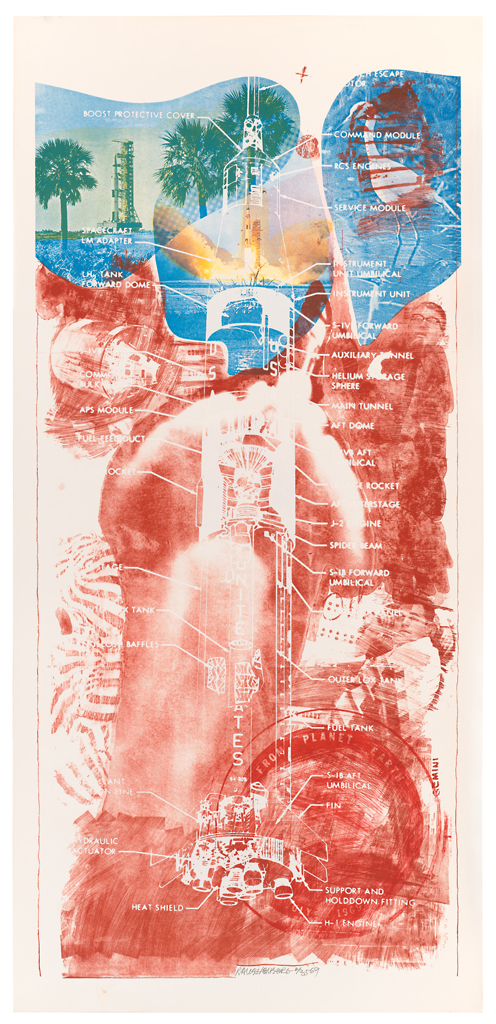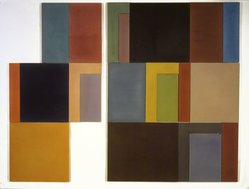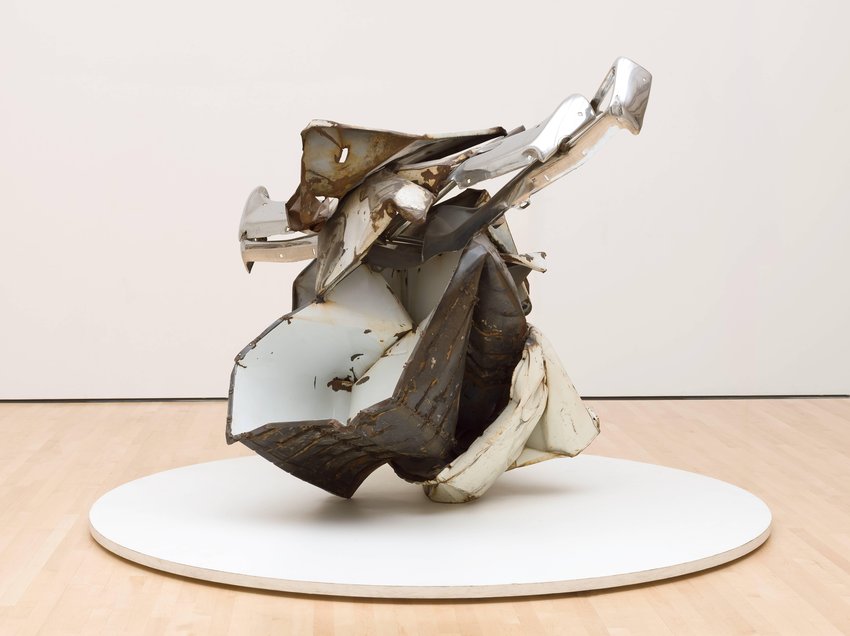10: Moon Museum
This is one small step for artist, one giant leap for artist kind. This question is: did it ever happen? Is there a secret museum on the moon?
Content Warning: One of the images in the moon museum may be perceived as sexual in nature, it is suggested, but no explicit reference of it is messaged. Parental digression is advised.
Welcome to Accession.
Today, we’re on the moon. Aquire the necessary components for a space craft, as well as a Saturn V rocket, and head down to Kenedy Space Center, in Cape Canaveral, Florida. (You’re also going to want some friends who know a thing or two about physics, but those can usually be found at your local community college.) Then get the rocket going up to 17,500 miles per hour to escape the Earths gravitational pull and get into orbit. Once you’ve take a few spins around the globe, and your physics friends say you’re good to go, ignite your thrusters to head towards the moon and get into it’s orbit. Once there, take a shuttle down to the moons surface and try to head for the Ocean of Storms. Make your way to the southeast portion of the ocean and find the Intreped lunar module from the Apollo 12 mission. And it is here that we will find our museum... probably. Today we’re looking at all of the pieces in the Moon Museum, accession year 1969 numbers 1-6.
Now you’re probably wondering why I brought you here, or how I got here myself, or how a museum got up here. Honestly at this point you’re probably pretty confused. For answers, we’re going to have to head back to the first week of November, 1969, when the number one song was Suspicious Minds by Elvis Presly and America was in the middle of it’s moon fever. BUt it’s gonna take me a while to explain, and I’m not sure if I have enough time with the limited oxygen up here. Probably should have thought of that before hand. Let’s head back to earth and I’ll explain it down there.
Ugh, much better. Now in 1969, the world of art was weird, in the best way possible. John Chamberlain and other such artists were creating pieces of abstract art in an attempt to express human emotion in a raw aesthetic form, a type of art known unsuprisingly as abstract expresionism. Robert Rauchenberg was doing pieces of art called combines, like collages and mixed media, whose themes on a consumerist culture anticipated and worked along side the pop artists like Andy Warhol, who you probably know for his soup cans, and Claes Oldenberg, who you probably know for making large sculptures of tiny every day objects. This group was constantly trying to redefine the term “art” and flip the mirror onto the American society. And in reaction to all this, artists like David Novros had begun working in minimalism, focusing more on color and simple geometry. The push in the art world was to experiment, to try new things, to break the form, to do something different. And in the middle of all of this was a sculptor, named Forrest Myers. His friends called him Frosty.
Now Frosty had an idea, a crazy idea. The kind of idea that could get some notice in this art world. And the kind of idea that would raise the eyes of the press in moonstruck America. If they could put a man on the moon, how hard could it be to get a museum up there. Frosty was going to put an art museum on the moon.
Frosty reached out to the organization E.A.T., which stands for Experiments in Arts and Technology. The group was founded by two engineers, Billy Klüver and Fred Waldhauer, from Bell Telephone Labs, and two artists, the afformentioned Robert Rauschenberg, and the Robert Whitman, who was a good friend and often collaborator with the also afformentioned Claes Oldenberg. They had worked together previously in 1966 to put on a series of theater events that incorporated arts and emmerging technologies, and decided that they wanted to build a platform from which other artists could benefit from similar colaborations with engineers in the Bell Labs team. Thus in 1967, the E.A.T. was formed. And in 1969, Frosty reached out to them with his idea for a moon museum.
Frosty and Fred Waldhauer hatched an idea for how they were going to make their museum a reality: use the same tech that allowed the scientists at Bell to design the circuit boards in phones, and etch the sketches the artists had made into a tiny ceramic waifer, half an inch by three quarters of an inch wide. So Frosty collected up sketches from five other artists and himself, and about sixteen of these ceramic waifers were made, one to go to the moon, and the rest to go to the artists and engineers involved. (That’s how now adays you could go see a copy of the Moon Museum in the MoMA, but it’s not the real deal.) Making these was easy enough. Now.. now he just had to... ya know.. get this thing to the moon. And, as it turns out, there was one thing, or rather, one entity, that stood in between this museum and its final destination: N-A-S-A, or as you probably know it NASA.
Now NASA was not formed to provide collaboration between artists and engineers. In 1958, Eisenhower signed the National Aeronatics and Space Act, which officially changed over the National Advisory Commity for Aeronautics, or NACA, to the National Aeronautics and Space Administartion. (Sound bite)
“Now NASA will be different from NACA in many ways. That is inevitable of course, because in many ways, NASA’s job will be different. But, and this is extremely important both to you and to me as individuals, and to the success of our mission, NASA must be like NACA in the qualities of strength and character that make an organization great. ”
As the Presidency shifted from Dwight D. to John F., the goal for NASA was even more clearly outlined.
“I believe that this nation should comit itself to achieving the goal, before this decade is out, of landing a man on the moon and returning him safely to the earth.”
“We choose to go to the moon in this decade and do the other things, not because they are easy, but because they are hard; because that goal will serve to organize and measure the best of our energies and skills; because that challenge is one that we are willing to accept, one that we are unwilling to postpone, and one we intend to win, and the others too.”
Finally, after Lyndon B, during the presidency of Richard M, just before the end of the decade, the Apolo 11 mission was carried out, and man was successfuly sent to the moon and returned safely.
“10, 9, ignition sequence start, 6, 5, 4, 3, 2, 1, zero. All engines running. Liftoff! We have a liftoff! Thirty-two minutes past the hour. Liftoff on Apollo 11!”
“I’m gonna step of the ramp now. That’s one small step for man, one giant leap for mankind.”
Now, as you can probably imagine, there is a lot that goes into making a rocket successfully land a person on the moon and bring them home, so when your organization is approached by an artist who want’s to successfully send his art musem to the moon, it’s not quite a high priority on the checklist. I mean, NASA never said no, they just never technically said yes either. But it’s that same long checklist of things required to go to the moon would ultimately end up helping Frosty and Waldhauer.
You see, most people think of NASA like a company, like Space X, with the goal of doing space related science and putting people in space. But really, NASA is a government agency, responsible for coordinating government contracts, and bringing together companies to help the American mission of space exploration as a whole move forward. So NASA was hiring manufacturers and labratories all across the U.S., and organizing their efforts to pull off the Apollo missions. And at one such manufacturers, Grumann Aircraft, which was working on the landing module for Apollo 12, Waldhauer had a friend, an engineer, who was willing to help. This engineer agreed to hide the museum beneath the layers of gold foil on the part of the module that stayed on the moon. For confirmation that the deed was done, the engineer told Frosty and Waldhauer that he would send a tellegram.
So on November 12, 1969 at precisely 3:35 PM, less than two days before the launch, Frosty recieved a tellegram from Cape Canaveral Florida. It read “YOUR ON’ A.O.K. ALL SYSTEMS GO. -JOHN F”
And on November 14, at 4:22 Apollo 12 took off, carrying astronauts Charles Conrad Jr, Richard Gordon Jr, and Allan Bean on their mission to the moon. Despite being struck by lightning twice on take off, it wasn’t the first Apollo mission to send a man to the moon, and it didnt involve the sort of catastrophe that Ron Howard would deem fit for a movie, so it remains the relatively obscure, less interesting middle space mission of this trilogy. But of course, that makes it the hipster darling of Apollo Missions. (It also has the best Apollo mission logo, hands down, but that is a story for another time.)
Frosty revealed the existence of his project to the New York Times, and they published an article about it, with a photograph, on November 22, two days after the crew had landed on the moon, but two days before they were scheduled to return to Earth. And now I think you understand why we went to the moon in the first place. So let’s head back up there.
So here we are at the landing module, and if my research is accurate, we should find here... ah yes, here it is! The Moon Museum! Tucked between the gold foil, just as expected!
Now here, in the bottom left, that’s the piece that Frosty made, a computer generated image of a pair of lines that make a sort of tube that weaves in and out of itself, forming a trefoil knot. In math we call a 3 sub 1 knot, for being the only prime knot with three crossings. But you don’t need to know all that. Frosty called the piece “Interconnection.”
Next in the bottom middle is the piece by Claes Oldenberg, who drew a sort of geometric variation on Mickey Mouse, a signature sketch of his and a popular motif in his art.
The two pieces on the right side, by John Chamberlain and David Novros as you go around, are very simple designs inspired by circuitry. Ironically, John Chamberlain’s simple lines that form a perfectly symetrical geometric shape are fairly reminiscent of Novros’ minimalism. And Novros’ black square with a few lines semi-randomly etched into it, is probably about as close to Chamberlain’s abstract expresionism as could possibly be achieved in this small format.
Now, in the top center of the wafer, our penultimate piece in the museum, it’s just a straight line, drawn by Robert Rauchenberg. Just a single straight line. Nothing more. Artists in the 60’s... I swear...
But if that doesn’t make you want to roll your eyes, it’s time for the final stop on our tour. It was drawn by none other than Andy Warhol, and it’s a very creative stylization of his initials, with the W split down the middle and an A pointed the other way joining the two halfs. In this way Warhol made his initials look like a rocket ship. A rocket ship and nothing else. Definitly doesn’t look like anything else. Nothing at all.
C’mon Warhol, I’m trying to make a family show here.
So that’s it. Our tour has come to an end. Up here on the moon there’s this museum, a sort of time capsule if you will. An intersection of America’s obbsession with the moon, the art world’s obsession with the novel and the bizzare, and the amazing creations that can come about when art and technology work together.
Stanley Kubrick: Cut, cut, cut. Ponder’s that was... that was fine, I guess, but you know, you really hammed up the last line.
Ponders: Oh, sorry Mr. Kubrick. I’m sorry.
Stanley Kubrick: Remember, we’re trying to get them to think that you’re actually on the moon. No one is gonna be convinced with that- pardon me, but you’re a professional- garbage, that you just laid out there alright. I mean you gotta get into the character. Would you find time to give a patriotic, hopeful speech like that if you were actually up there with, you know, limited oxygen? We’re gonna need to rewrite this whole thing. The public will never believe it. Break for lunch. I’ll be in my trailer rewriting again...
Sources:
Information on the Moon Museum came from the wikipedia page on the Museum, the MoMA's collection page on one of their copies, and the chat rooms and forums of the conspiracy side of the internet.
Information on the Apollo Missions, the formation and history of NASA, and the archival audio all came from the NASA Website.
Music:
Thus Spoke Zarathustra by Richard Strauss
Welcome Home Soon from Sunday at Slim's by Blue Dot Sessions
Floating Whist from Aeronaut by Blue Dot Sessions
Surly Bonds from Aeronaut by Blue Dot Sessions
Moon Bike Theme from American Moon Bike by Blue Dot Sessions
Special Thanks:
My special thanks this week goes out to Alice White, Buddy Duquesne, V Silverman, and Charles Gustine, who I'm pretty sure just nailed the roll of his life as Stanley Kubrick at the end of the episode. They've been an incredible group of podcast people to have behind my back as I've been starting this show, and they have all been endlesly supportive since the first moments I met each of them. For those of you who don't know Alice White and Buddy Duquesne have an excellent podcast called Those Happy Places, which treats theme parks like literature, V Silverman has an amazing show called Fuzzy Logic, and Charles Gustine has a great show called Iconography, which just started it's second season, all about the geography on icon's in New England.
Credits:
Our theme music was performed by Mike Harmon, with recording, editing, and mixing from Casey Dawson. Our show art was made by V Silverman. The script is turned into a transcript by Amanda Borglund. Social media and marketing assistance comes from Lauren LaPorto. This episode was produced, written, recorded, and edited by T.H. Ponders .



![untitled [Vegetarian Vegetable] from Campbell's Soup II, Andy Warhol, 1969](https://images.squarespace-cdn.com/content/v1/592c61d815d5db2bc1ca40c2/1529986788112-LYAJC1TEA9NFNQQYSY0S/wac_9549.jpg)













